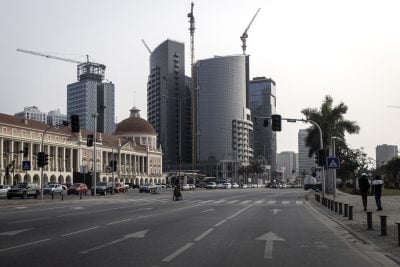After years of planning and discussion, the East African Community (EAC) is finally beginning to fulfil some of its early promise. Cross-border labour mobility across the region is increasing and an East African power pool is planned, yet nowhere is regional integration moving at a faster pace than in the banking sector.
In addition to the general economic growth in the region, boosted by increased manufacturing output, substantial oil discoveries in Uganda and the establishment of the newest state in the world, Southern Sudan, with its own oil resources, are turning East Africa into the continent’s latest growth dynamo.
Established financial institutions in one country are seeking to expand into neighbouring markets through acquisitions or organic growth, while the prospect of a strong regional economy is enticing some of the world’s biggest banks to invest in the region for the first time.
The latest entrant into the Kenyan banking sector is one of the world’s biggest banks, HSBC. It has now been awarded an operating licence by the Central Bank of Kenya (CBK) and will use its representative office in Nairobi to act as a sales and marketing base for the entire region. The bank’s head of global banking for Africa, Ian Carr, said that HSBC will seek to replicate its strategy in South Africa, where it has promoted public/private partnerships. He added: “There are significant infrastructure funding requirements in Kenya.”
With market capitalisation of $188bn in late March, HSBC will be by far the biggest global player involved in the East African banking sector, ahead of two other British companies that have long been active in Kenya: Barclays, with a market value of $59bn, and Standard Chartered, with $40bn.
Other foreign investors in Kenya include Russian investment bank Renaissance Capital, which purchased the banking licence of Francis Thuo and Partners in 2007, while JPMorgan Chase is also considering launching an offshoot in the country. Speaking at the Reuters African Investment Summit in early March, the JP Morgan chief executive for sub-Saharan Africa, John Coulter, revealed: “There’s a lot of focus on Africa because our senior management sees a significant growth opportunity over the next 10 years and we’re seeing our clients increasingly move here, be it an Indian multinational or a German multinational.”
Martin Oduor-Otieno, the chief executive of Kenya Commercial Bank (KCB), said: “Competition is vicious, actually. There’s almost a false notion that banks are having it very easy and making lots of money. People sort of think that there’s easy money here but it isn’t; it’s a real struggle. So whoever is coming into this territory must really be prepared for that level of investment if he’s to make any money.” He added: “There are a number of banks, all of them literally offering the same products so the key issues are service and price. Consumers are driving down margins very aggressively, particularly where they have the muscle.”
By March this year, there were 43 commercial banks in Kenya, including nine that are listed on the Nairobi Stock Exchange and 13 that were owned by foreign interests, including Nigeria’s United Bank for Africa (UBA). This is a large pool of financial institutions but there is certainly plenty of room for growth in the market. A total of 12.8m bank accounts were registered in the country at the start of this year. This is equivalent to roughly one bank account for every three Kenyans, although in practice many bank customers hold more than one account each.
In addition, more people are believed to use mobile banking than traditional bank accounts to manage their finances. Safaricom, Kenya’s biggest mobile operator launched the first mobile payment scheme in Africa, M-Pesa, in 2007 and remains the biggest player in the sector, but there are signs that the mobile and banking sectors are moving closer together rather than into competition with each other. Safaricom and Equity Bank jointly launched a mobile phone based bank account, M-Pesho, last May and it had secured 700,000 customers within the first year of operation.
Rush for Rwanda
However, perhaps the biggest trend in the region’s banking sector at present is the expansion of established East African banks into neighbouring countries. Kenya’s National Industrial Credit (NIC) Bank plans to follow its move into Tanzania by expanding into Rwanda. NIC managing director James Macharia commented: “We are now seeing the fruits of diversification having started as a one-product instalment credit company in 1959 expanding to the current offering of a wide range of financial services, both corporate and retail, as a fully fledged commercial bank. We are scanning for M&A opportunities with a focus on finding a bank whose strategy fits in ours as we did in Tanzania, but if we fail we will go greenfield in one of the cases.”
Equity Bank, again of Kenya, will open five branches in Rwanda and three in Tanzania, its chief executive James Mwangi has announced. Equity Bank will start operating in Rwanda in April, and in Tanzania in May, Mwangi confirmed – adding that the bank received a licence to operate in Rwanda and has already hired staff.
Equity, which also has operations in neighbouring Uganda and South Sudan, has retained Ksh4bn shillings ($47.8m) of its earnings to fund the company’s expansion, Mwangi said. Both the Ugandan and South Sudan units are expected to contribute about 10% of the company’s total profit in the 12 months to December, he added.
Kigali has placed improved access to credit for companies of all sizes at the heart of its long-term economic strategy. It has eased restrictions on the entry of new financial institutions into the domestic market, where there are expected to be a dozen banks by the end of this year.
Another financial institution with regional aspirations, Diamond Trust Bank (DTB), is already profiting from its strategy. The company, which has branches in Uganda, Tanzania, Kenya and Burundi, recorded an 80% jump in profits from KSh1.9bn ($22.4m) in 2009 to KSh3.5bn ($41.25m) last year, with all four markets contributing to the improved figure.
Diamond’s chief executive and managing director, Nasim Devji, said: “In 2010, DTB performed exceptionally well with the group’s market share of assets and profitability continuing to grow across the East African region. The sustained growth of DTB’s customer base is underpinned by its branch expansion strategy as well as last year’s launch of alternative, technology based channels such as mobile banking, cash management services and enhanced internet banking services.”
Apart from the process of economic integration being promoted by the EAC, new entrants into the Rwandan market are being attracted by the profits on offer. A report by the National Bank of Rwanda in March revealed that the country’s banking sector has just enjoyed its best year on record. The central bank calculates that banks operating in the country recorded a combined pre-tax profit of Rwf13.1bn ($21.58m) in 2010, more than three times the profit made during the previous year.
Domestic Rwandan banks are also performing well. For instance, Rwanda Commercial Bank (BCR) recorded a post-tax profit of Rwf2.6bn ($4.28m) in 2010, up from Rwf0.9bn ($1.48m) in 2009, partly on the back of its new mortgage products but also because of greater investment in IT.
Sanjeev Anand, the bank’s managing director, explains: “We upgraded our core banking platform to incorporate straight processes like internet and SMS banking. These permitted our customers to access banking services easily.” He added: “We now focus our risk management on supporting business units to grow their loan books efficiently.”
Bank governor François Kanimba is confident that the influx of new banks will benefit the wider Rwandan economy in the near future. He said: “The developments in the banking sector through December 2010 continued to be healthy as shown by the financial soundness indicators of the Rwandan banking industry, measured in terms of capital adequacy, earnings, asset quality and liquidity.” He went on to predict that 2011 could be another good year.
Although many established banks in East Africa are seeking rapid regional growth through acquisitions, several officials at central banks have stated that they would prefer more greenfield developments. They have hinted that they would favour banking licence applications for start-up operations in order to increase competition in the sector and across East Africa as a whole.
There is no guarantee that setting up operations in new markets will actually generate profits. Uganda has already experienced the same wave of expansion that is now targeting Rwanda. However, KCB’s offshoots, including its Ugandan operations, recorded a KSh1.8bn ($94.28m) loss in financial year 2009–10, while Equity Bank-owned Uganda Microfinance Limited also made a loss. Yet with Rwanda and Uganda recording generally higher rates of economic growth than Kenya, new entrants into the banking sectors of both countries must take a long-term view of their investment.
Apart from direct cross-border expansion, East Africa is also experiencing a greater volume of cross-border financial deals. For example, in March, KCB agreed to provide a $5.4m loan to Tanzania’s Precision Air Services to fund the construction of a modern hangar at Julius Nyerere International Airport in Dar es Salaam. The airline, which is 49% owned by Kenya Airways, flies between cities in Tanzania, Kenya and Uganda and is currently seeking a listing on the Dar es Salaam stock exchange. Kenya’s Minister of Transport Omari Nundu said: “The ultra-modern hangar, which will be operating for 24 hours, will have the capacity to accommodate three ATR72s, B767 or Airbus 330 at a time when completed.”
Five to become six?
Following January’s vote for secession, South Sudan shows every sign of joining the East African group of nations.
The territory had more economic connections with East Africa than with Khartoum during the pre-colonial era and the leaders of the world’s newest nation are banking on promoting trade with the region to generate economic growth.
A new oil pipeline and railway are planned from near the new capital, Juba, to the Kenya coast, either to the port of Mombasa or to a planned new port at Lamu.
By the same token, Southern Sudan offers an almost completely open market for banks seeking to expand their international operations.
Even well before the referendum, Equity Bank launched a Southern Sudanese subsidiary that managed to register a pre-tax profit of KSh349m ($4.16m) for 2009–10, while KCB’s Southern Sudan unit is also profitable. Although the new state may be poor, its oil wealth will generate billions of dollars in revenue that should feed through into the rest of the economy.
Looking ahead, most research indicates that there is still some way to go before the East African banking industry manages to provide adequate funding for local businesses.
The telecoms sector has proved to be one of the region’s most successful industries in recent years, attracting funding from both international and local banks. Yet the recent Impact Investing: Challenges and Opportunities in the East African ICT Sector report by the Capital Markets Authority in Kenya concluded that small and medium-sized enterprises (SMEs) in East Africa’s information and communications technology sector still have very limited access to financing.
The traditional reticence of many African banks towards funding anyone other than large companies and high net worth individuals is being eroded very slowly.
Yet it is vital that as many individuals and small companies as possible are brought into the banking sector.
It will ease access to housing loans and business expansion, as well as providing an opportunity to boost savings. Although the sector did its best to complicate matters in the run-up to the global financial crisis, the fundamental aims of the banking industry remain as simple as ever.
Want to continue reading? Subscribe today.
You've read all your free articles for this month! Subscribe now to enjoy full access to our content.
Digital Monthly
£8.00 / month
Receive full unlimited access to our articles, opinions, podcasts and more.
Digital Yearly
£70.00 / year
Our best value offer - save £26 and gain access to all of our digital content for an entire year!
 Sign in with Google
Sign in with Google 


